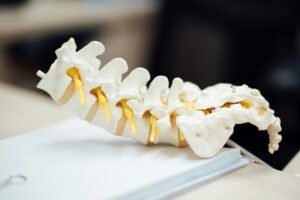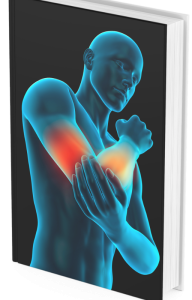Low Back and Hip Pain:: Exploring the Hidden Connection
Hip pain and low back pain are two common complaints that many individuals experience at some point in their lives.
While these issues may seem unrelated, there is actually a hidden connection between the two. By understanding this link, healthcare professionals can better diagnose and treat patients’ pain symptoms more effectively.
In this article, we will delve into the intricate relationship between hip pain and low back pain, uncovering the underlying causes behind these interconnected conditions. We will explore how problems in one area of the body can manifest as discomfort in seemingly unrelated areas nearby. This knowledge is crucial for both medical practitioners and individuals suffering from chronic or acute hip and lower back pain.
Furthermore, we will discuss various factors that contribute to the development of hip pain and its association with low back pain.
From age-related degeneration to muscle imbalances caused by sedentary lifestyles or improper form during physical activities, there are numerous influences at play when it comes to experiencing discomfort in both regions simultaneously. Moreover, our examination will encompass different diagnostic techniques used by healthcare professionals to identify whether an individual’s hip or lower back issues stem from a shared source.
Understanding how imaging studies such as X-rays or MRI scans provide valuable insights into these conditions allows us to tailor treatment plans specific to each patient’s needs more accurately.
Lastly, we will examine effective treatment options available for managing hip and low back pain comprehensively.
From conservative approaches like physical therapy and medications to minimally invasive interventions such as injections or surgical procedures when necessary, readers will gain insight into potential remedies that cater specifically to their condition.
By exploring this concealed correlation between hip pain and low backpain,injured Individuals grappling with frustrating symptoms can find solace knowing they are not alone; countless others share similar experiences.
Arm yourself with knowledge about this complex relationship,and be empowered on your journey toward finding a solution to your chronic pain.
The Anatomy of the Hip and Low Back: Understanding the Structure and Function
The hip is a ball-and-socket joint located where the thigh bone meets the pelvis, allowing for a wide range of movement. It consists of the femur (thigh bone), acetabulum (part of the pelvic bone), and various muscles, tendons, and ligaments that provide stability.
The low back, or lumbar spine, supports the upper body’s weight and allows for bending, twisting, and other movements. It consists of five vertebrae stacked on top of each other and cushioned by intervertebral discs.
The muscles surrounding both areas play a crucial role in maintaining proper alignment and function. These include the gluteal muscles in the hip region responsible for stabilizing while walking or running; as well as core muscles like abdominals and erector spinae in the lower back.
Understanding how these structures work together can help identify potential sources of pain or dysfunction when experiencing hip or low back discomfort.
Common Causes of Hip Pain: Identifying the Culprits Behind Discomfort
Hip pain can arise from various underlying causes. By understanding the common triggers, you can identify the source and seek appropriate treatment. Here are a few culprits behind hip discomfort:
- Osteoarthritis: A degenerative joint disease, osteoarthritis often affects the hips and leads to pain, stiffness, and limited range of motion. Aging, overuse, or previous injuries may contribute to its development.Bursitis: Inflammation of the bursae (small sacs filled with fluid), located throughout the hip joint area is known as bursitis. Overdoing physical activity or repetitive movements can irritate these sacs and result in sharp pain.
- Muscle strain: Overexertion or sudden movements can strain muscles surrounding the hip joint leading to acute pain that limits mobility temporarily.
- Labral tear: The labrum is a ring of cartilage that lines the socket of your hip joint for added stability. It can tear due to trauma or repetitive motions causing localized pain within your groin or buttocks.
- Tendinitis: When tendons around your hip become inflamed from overuse or injury, it results in tendinitis characterized by dull ache during activities involving leg movement.
By being aware of these common causes of hip pain you will be better equipped to discuss your symptoms with health professionals who will be able to provide an accurate diagnosis and subsequent care plan tailored for recovery specifically suited toward patient requirements.
The Role of the Spine: How Low Back Issues Can Contribute to Hip Pain
The spine, particularly the lumbar region or lower back, plays a crucial role in hip pain.
- Misalignment or dysfunction in the lumbar vertebrae can put pressure on nerves that travel from the spinal cord to the hips.
- This compression can cause referred pain sensation in the hip, resulting in discomfort and limited mobility.
- Additionally, tightness or weakness in muscles surrounding the spine and hips can further exacerbate low back issues and contribute to hip pain.
Understanding how these interconnected areas of the body influence each other is essential for addressing and treating both low back and hip pain effectively.
Hip Disorders and their Impact on Low Back Health
Hip disorders, such as hip osteoarthritis or bursitis, can have a significant impact on the health of your low back.
- When the hip joint becomes inflamed or damaged, it can alter your gait and posture, putting extra strain on the muscles in your lower back.
- This increased stress can lead to muscle imbalances and tightness in the lower back, resulting in pain and discomfort.
Another common hip disorder that affects low back health is femoroacetabular impingement (FAI), a condition where there is abnormal contact between the ball-shaped head of the femur bone and acetabulum socket.
- FAI can cause limited mobility in the hip joint, which may result in compensatory movements from other areas of your body.
- Over time, these compensations can place excessive pressure on your low back joints and discs, leading to chronic low back pain.
To maintain optimal low back health, it’s important to address any underlying hip disorders promptly through proper diagnosis and treatment. Physical therapy focusing on strengthening core muscles along with targeted stretches for hips could help improve both hip function while reducing stress in your lower spine.
Acupuncture and Dry Needling play a crucial role in helping the pain with these conditions.
Treating Hip Pain to Alleviate Low Back Pain: Effective Strategies and Interventions
Hip pain is often connected to low back pain, making it crucial to address both issues simultaneously for effective relief. Here are some strategies and interventions that can help alleviate hip pain and subsequently reduce low back discomfort:
- Physical Therapy: Engaging in targeted exercises and mobilisation techniques with Osteopathic treatment can both strengthen the muscles around the hip joints, and improve mobility improving stability and decreasing pressure on the lower back.
- Stretching Exercises: Regularly stretching the hips and surrounding muscles can enhance flexibility, relieve tension, and lessen strain on the lower back. Incorporating moves such as the butterfly stretch or supine figure-four stretch into daily routines can have significant benefits.
- Posture Correction: Correcting posture while sitting, standing, or lifting heavy objects plays a crucial role in minimizing hip and low back pain. Maintaining proper alignment helps distribute weight evenly across all supporting structures.
- Using Dry needling, trigger point treatment and Acupuncture to help improve the pain around the hip joint and reduce muscular tension
By following these strategies, individuals experiencing hip pain can reduce their chances of developing associated low back discomfort.
Preventing and Managing Hip and Low Back Pain: Lifestyle Changes and Self-Care Tips
Lifestyle Changes for Preventing and Managing Hip and Low Back Pain
- Maintain a healthy weight: Excess weight puts additional stress on the hip and low back joints. By maintaining a healthy weight through proper diet and exercise, you can reduce the risk of developing or worsening hip and low back pain.
- Exercise regularly: Engaging in moderate physical activity such as walking, swimming, or cycling can help strengthen the muscles around the hips and lower back, providing support to these areas. Incorporate exercises that focus on improving flexibility, strength, and posture into your routine.
Self-Care Tips for Hip and Low Back Pain Relief
- Practice proper body mechanics: When lifting heavy objects or bending down, make sure to use your leg muscles rather than straining your back. Avoid twisting motions that put excessive pressure on the hips and spine.
- Improve your sleep position: Opt for sleeping on your side with a pillow between your knees to maintain alignment of the hips and spine. If sleeping on your back is more comfortable, place a pillow under both knees to relieve pressure from those areas.
By adopting lifestyle changes such as maintaining a healthy weight through balanced dieting while exercising regularly with activities like walking; one would be able to mitigate risks regarding conditions leading towards painful issues within their bodies like hip pain leading onto low-back problems & backaches!
Another tip includes practicing better body mechanics when performing tasks involving bending over (such as picking up items). Alongside this method comes using appropriate techniques when attempting lifting maneuvers overall–using leg muscles primarily instead so one isn’t placing unnecessary strain upon delicate areas susceptible towards injury.
One must establish good habits even during bedtime too – ensuring proper positioning occurs whilst resting/sleep periods might potentially offer relief/reduce discomfort levels felt throughout night slumber. Not only does laying within particular postures alleviate pains received but also helps maintain alignment among skeletal elements involved therein(hips & spinal structures being prominent examples!).
Ultimately what benefits one most shall vary person-to-person based upon personal preference & unique health factors!





